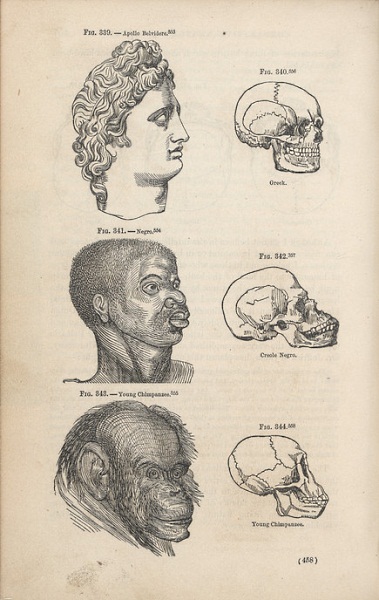Military Medicine: The West India Regiments and the Making of Race, 1795-1865
Led by Tim Lockley. This component will use the WIR as a case study to explore the evolving nature of racial thought at the end of the 18th and the first half of the 19th century. Race, as a concept, evolved during the 19th century. Increasingly racial science based on medical observations and theories was used to differentiate between those perceived as belonging to different ‘races’.
- How did medical personnel attached to the WIR come to understand the nature of the black bodies they dealt with?

- How far did they arrive at a coherent body of thought regarding the racialised identity of black soldiers?
- Were competing racial theories espoused by doctors and, if so, how were those differences resolved?
- Did physicians perceive any difference between WIR soldiers and enslaved people in the Caribbean?
Since it is clear that prominent pro-slavery writers in the southern United States such as Dr Josiah Nott, based their theories on their own physical observations of African-Americans, this component will also assess the transnational influence of knowledge of Caribbean soldiers of African descent upon pro-slavery theorists in the USA.
Fascination with the black body runs deep in the white psyche. Travellers to Africa in the early modern era nearly always offered up thoughts on the physicality of the native inhabitants. Most compared them negatively with a European idealised body, but some had a more positive view of the shape, form and symmetry of black bodies. The onset of the trans-Atlantic slave trade forced a reconceptualisation of the black body, one that was now manacled, abused, even destroyed. Plantation slavery in the Americas did little to change those ideas with black bodies becoming sites of ritualised violence, torture, and degradation. Brutalisation of enslaved bodies can partly be explained by the widespread fear of violent black reprisals, particularly in regions where whites constituted the minority. During the 18th century, however, black resistance to slavery, most evident via rebellions and marronage, persuaded some whites to accept the reality of black physical strength, power and agency. The government of Jamaica signed a peace treaty with maroons in 1739; counterparts in Surinam did the same in the 1760s. During the American Revolution, the British, and to a far lesser extent the patriots, recruited and armed slaves and the Haitian Revolution in the 1790s marked a high point of black militarism.
(Illustration from Josiah Nott, Types of Mankind [Philadelphia, 1854] p458)
The militarisation of the black body in the era of the revolution is comparatively under- studied, yet is crucial to our perception of the plastic nature of race as a concept. Whites who feared the armed black man were willing, when circumstances dictated, to facilitate the arming process. This strand of the research project aims to explain how whites ‘rediscovered’ the black body in the later 18th and early 19th century, and how the evolving white understanding of the black body from passive slave to armed combatant was crucial to the changing definition of race.
Methodology: The WIR attracted the usual bureaucracy, including (white) commanders and army surgeons. The BL holds Parliamentary Statistical Reports on Sickness among Service Personnel and Tables of Comparative Mortality Rates that include the WIR. These statistical analysis of mortality ultimately spurred more detailed investigation by physicians. It is the records generated relating to the individual soldiers in particular that will provide a new insight into the evolution of racial thought in this period. Doctors were vital cogs in the military machine since sick soldiers drained resources and were incapable of fighting. The problem that British military powers had struggled with since the 17th century was maintaining a viable white military force in tropical climates. The need for resistant black bodies that would not suffer the same ravages of disease was therefore crucial. Medical personal attached to the WIR, while treating the variety of day-to-day injuries that were to be expected, were fascinated by the increased resistance of their soldiers to various diseases including yellow fever and malaria.
The letters and diaries of those involved with the WIR will be used to document the evolving understanding of the pathology of disease, and specifically how medically trained people arrived at race as a means to explain what they observed. The papers of William Dent and Thomas Murray who served with the WIR in the 1820s are in the Wellcome Library, as are the diaries of John Hall and John Davy, surgeons who visited the West Indies. The records of the Royal Hospital Corps and the Naval Hospital in Barbados are also in the Wellcome Library. Medical journals such as the London Medical Journal and the British and Foreign Medical Review (both in the BL) contain information on diseases and treatments throughout the empire, while The Physical Journal, published in Jamaica in the 1830s, will provide a local perspective on medicine in the Caribbean. Medical texts were widely circulated, particularly those relating to the latest treatments for tropical diseases that continued to baffle doctors. Medical journals published in North America, such as the Southern Medical and Surgical Journal and the North American Medical and Surgical Journal will be used to demonstrate how medicalised racial ideas permeated the Atlantic world.
PhD Project: This component has an associated PhD Project, ‘Fear of the Armed Black Man in the Antebellum South’
